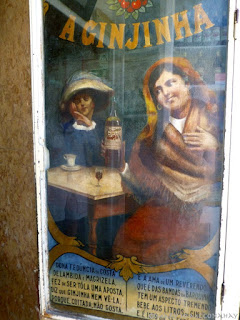 |
| Nagasaki, 1945 |
One day we heard 'he has come home!' so we ran to the house. But it was his remains. I cried....I thought to myself, 'I will never make war again in my life.'"
---Tosirhiro Fukahori, age 11, Nagasaki, 1945. Living Beneath the Atomic Cloud. The Testimony of the Children of Nagasaki. 1949.
Kazuko Kojima was born in a crowded bomb
shelter where her mother was still hiding two days after the first atomic
explosion in Hiroshima. A midwife who
happened to be in the shelter helped with the delivery, then died of radiation
poisoning. Like many female survivors of
irradiated Hiroshima, looked down upon by many Japanese as tainted by the bomb,
she grew up with no expectation of marriage. But before her mother died of
cancer a marriage was arranged between Kojima and “a kind man,” much older than
herself, and a healthy baby was born. When I interviewed Kojima in Hiroshima in
the 1980s, balancing the infant on her lap, she told me that because of her
child, she wanted to fight against nuclear weapons.
 |
| Model of Fat Man, dropped on Hiroshima from the Enola Gay |
On the 70th anniversary of the
atomic bombing of Hiroshima on August 6, 1945, when more than sixty thousand persons
died in the once beautiful city, atom bomb survivors called hibakusha, who can look back on the
experience, as Kojima can, met with Japanese Prime Minister Shinzo Abe and
asked him to change his mind about revising the Japanese constitution to allow
Japan to engage in war. The U.S.
bombings of Hiroshima and three days later, Nagasaki, where 40,000 died immediately
and 40,000 later from the bomb’s effects, are the only times, so far, nuclear
weapons have been used in warfare. Today the post-war “Peace Constitution,”
written by U.S. occupation forces but hugely popular with many Japanese through
the decades, is up for grabs. That is a shame, because for decades Japan has
shown that a pacifist constitution can work. Hibakusha, who suffered under the ultimate technological weapon of war,
are at the heart of Japan’s anti-war movement, and their voices are worth
listening to.
When the bomb fell on her home town of
Nagasaki, cleaning woman Tsuyo Kataoka told me in that seaport city that the
rays that burned her clothes from her body and temporary blindness prevented
her from seeing the destruction around her for weeks.
“That atom bomb gave enough agonies to all of us,” she told me. It shouldn’t be allowed to happen to someone else.”
Until a visit by Pope John Paul II in 1981, survivors like Kataoka from Nagasaki, home of Japan’s largest Christian community, believed, as many non-Christians did too, that firebombing and especially the atom bombs were a kind of divine retribution for Japan’s wartime actions, or even for personal “sins.” The pope said that was not only bad theology, but a good way to invite history to repeat itself.
“War is the work of man,” said the pope. “The waging of war is not inevitable or unchangeable.” There was no justification, he said, “for not raising the question of the responsibility of each nation and each individual in the face of possible wars and of the nuclear threat.” After years of keeping her experience to herself, Kataoka became an anti-war activist.
“That atom bomb gave enough agonies to all of us,” she told me. It shouldn’t be allowed to happen to someone else.”
Until a visit by Pope John Paul II in 1981, survivors like Kataoka from Nagasaki, home of Japan’s largest Christian community, believed, as many non-Christians did too, that firebombing and especially the atom bombs were a kind of divine retribution for Japan’s wartime actions, or even for personal “sins.” The pope said that was not only bad theology, but a good way to invite history to repeat itself.
“War is the work of man,” said the pope. “The waging of war is not inevitable or unchangeable.” There was no justification, he said, “for not raising the question of the responsibility of each nation and each individual in the face of possible wars and of the nuclear threat.” After years of keeping her experience to herself, Kataoka became an anti-war activist.
 |
| Hiroshima, after the bomb was dropped |
A calligraphy teacher, Hiromu Morishita
was standing near a river over a mile from the blast’s hypocenter, and survived
despite terrible burns. “I came across a group of soldiers whose skin was
completely peeled off, like reptiles, below their cap lines,” he recalled when
we talked. “Right after the blast my
friend asked me what he looked like, and because his skin was hanging like rags
I told him, ’like a melted candle.’ I was obviously in the same condition, but
the possibility didn’t occur to me at the moment.”
Survivors appear frustrated that their stand has made no
impression on the Prime Minister, whose government is pushing through bills to
weaken the peace constitution.
"The longer discussion went on, the clearer it became that they were just trampling on the constitution and its renunciation of war and military strength," a member of the survivors group said, according to the Reuters news agency.
I do not know whether the survivors I spoke to in the 1980s are still alive. If they are, I believe it is not likely that they, who experienced
the atomic bombs in their own flesh and blood, or their daughters and sons,
will give up the fight easily. In Japan, I recall one hibakusha in particular, a doctor, who told me speaking out against
war was “the only way we can make sense of the fact we survived.”
 |
| Hiroshima. Lanterns commemorating the dead floating on river in front of the Peace Dome. |
(My travel to Japan was supported by a grant from the Hiroshima International Cultural Foundation.)








































